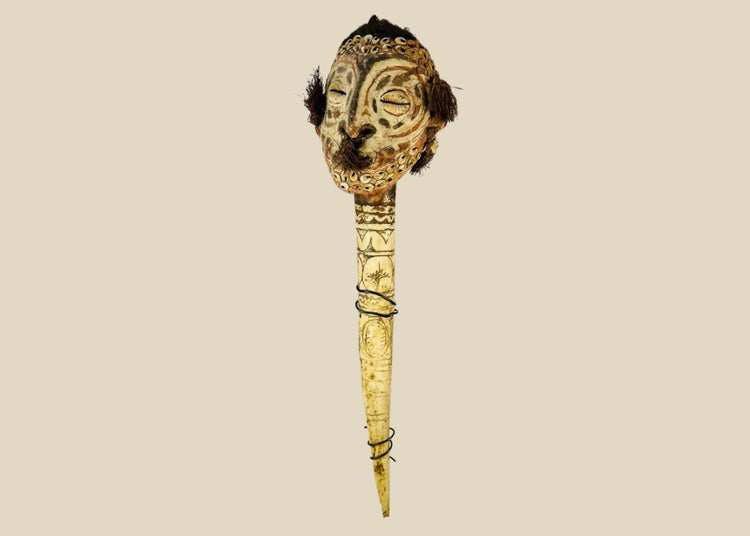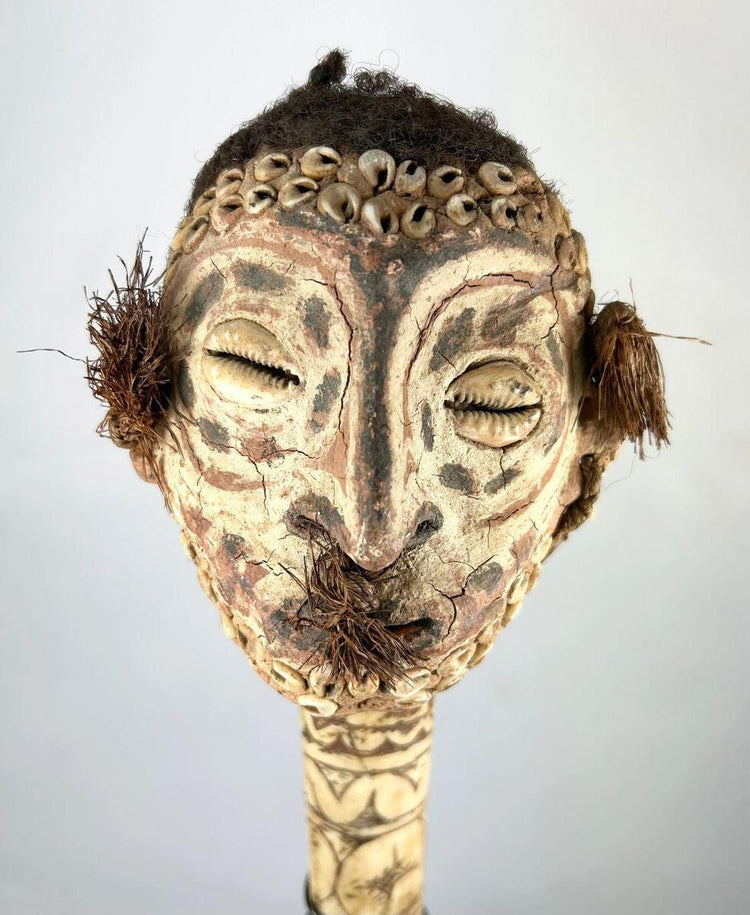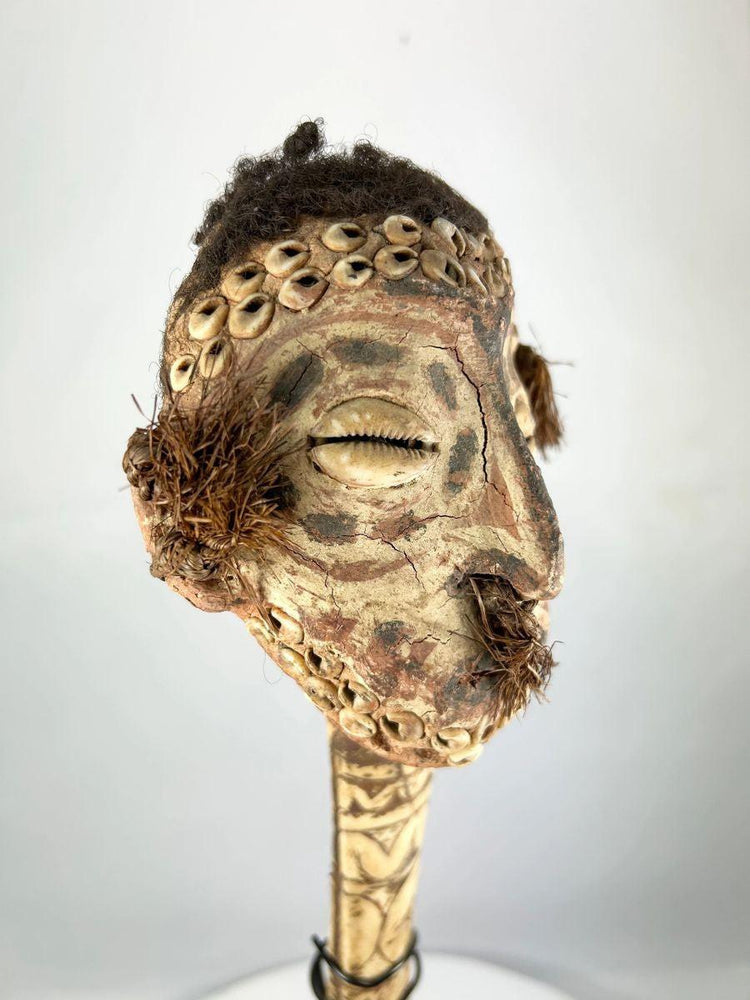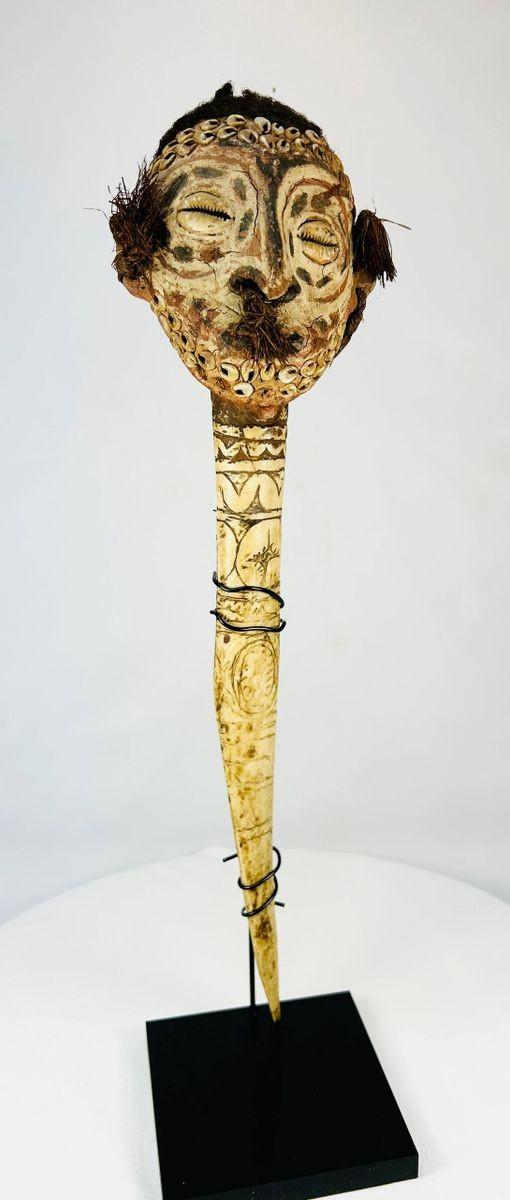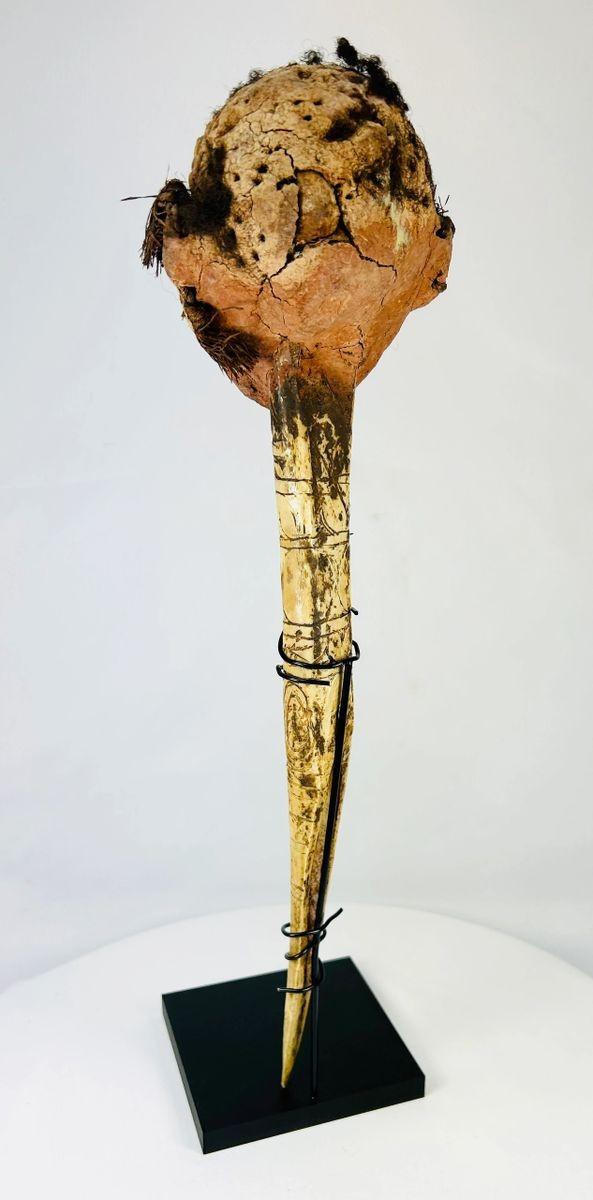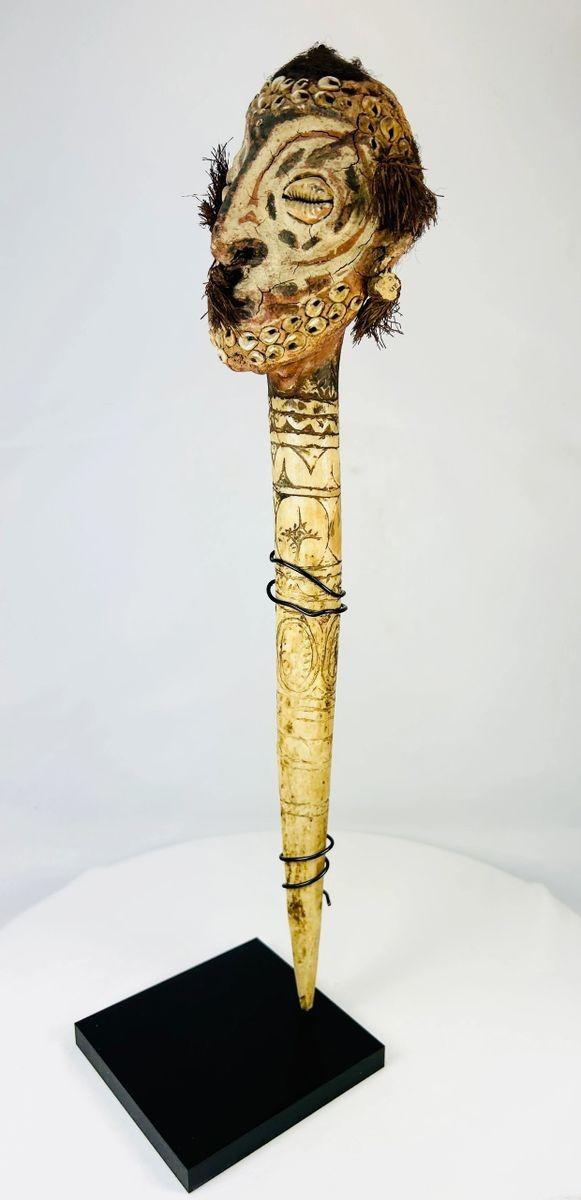Dague cérémonielle en os de Papouasie-Nouvelle-Guinée, artefact tribal avec coquillage cauri et cheveux
Description
Plus
Moins
Contexte historique et origine
Région : fleuve Sepik, Papouasie-Nouvelle-Guinée
Matériau : Os avec incrustations de coquillages cauris, cheveux humains et décoration sculptée
Période : XIXe siècle de notre ère
Description
Ce rare poignard cérémoniel de la région du fleuve Sepik, en Papouasie-Nouvelle-Guinée, incarne les profondes traditions spirituelles et le savoir-faire artistique de son peuple. Sculpté à la main dans un os dense et orné de coquillages cauris, de cheveux humains et de motifs tribaux complexes, ce poignard servait non seulement d'arme, mais aussi d'objet sacré utilisé lors de cérémonies et de rites d'initiation. Sa tête anthropomorphe sculptée symbolise les esprits ancestraux, reliant le porteur à la lignée, à la protection et à l'identité tribale.
Caractéristiques
- Tête anthropomorphe sculptée représentant des esprits ancestraux ou des divinités
- Incrustations de coquillages cauris symbolisant la fertilité, la richesse et la connexion spirituelle
- Ornement de cheveux humains, signifiant la lignée et le pouvoir protecteur
- Motifs tribaux géométriques sculptés à la main, reflétant l'iconographie rituelle
- Construction osseuse dense avec patine de surface vieillie confirmant l'authenticité
Importance culturelle
Chez les tribus du fleuve Sepik, les dagues cérémonielles étaient imprégnées d'énergie spirituelle et de présence ancestrale. Utilisées lors des rites d'initiation, des rituels tribaux et parfois au combat, elles servaient de passerelle entre les mondes physique et spirituel. Les détails en cheveux humains et les images ancestrales sculptées rendaient ces objets rares et puissants, créant des liens tangibles avec le patrimoine et la cosmologie tribale. Cette dague reflète à la fois le rôle sacré des artefacts rituels et le savoir-faire de l'artisanat Sepik, considéré comme l'un des plus vénérés d'Océanie.
Condition
La dague est bien conservée, avec une patine naturelle et une légère usure due à son âge et à son usage cérémoniel. Les détails sculptés, les incrustations de coquillages cauris et la parure de cheveux sont restés intacts, confirmant sa rareté et son importance culturelle.
Dimensions (approximatives)
Longueur : 14 po
Âge
XIXe siècle de notre ère
Description
Contexte historique et origine
Région : fleuve Sepik, Papouasie-Nouvelle-Guinée
Matériau : Os avec incrustations de coquillages cauris, cheveux humains et décoration sculptée
Période : XIXe siècle de notre ère
Description
Ce rare poignard cérémoniel de la région du fleuve Sepik, en Papouasie-Nouvelle-Guinée, incarne les profondes traditions spirituelles et le savoir-faire artistique de son peuple. Sculpté à la main dans un os dense et orné de coquillages cauris, de cheveux humains et de motifs tribaux complexes, ce poignard servait non seulement d'arme, mais aussi d'objet sacré utilisé lors de cérémonies et de rites d'initiation. Sa tête anthropomorphe sculptée symbolise les esprits ancestraux, reliant le porteur à la lignée, à la protection et à l'identité tribale.
Caractéristiques
- Tête anthropomorphe sculptée représentant des esprits ancestraux ou des divinités
- Incrustations de coquillages cauris symbolisant la fertilité, la richesse et la connexion spirituelle
- Ornement de cheveux humains, signifiant la lignée et le pouvoir protecteur
- Motifs tribaux géométriques sculptés à la main, reflétant l'iconographie rituelle
- Construction osseuse dense avec patine de surface vieillie confirmant l'authenticité
Importance culturelle
Chez les tribus du fleuve Sepik, les dagues cérémonielles étaient imprégnées d'énergie spirituelle et de présence ancestrale. Utilisées lors des rites d'initiation, des rituels tribaux et parfois au combat, elles servaient de passerelle entre les mondes physique et spirituel. Les détails en cheveux humains et les images ancestrales sculptées rendaient ces objets rares et puissants, créant des liens tangibles avec le patrimoine et la cosmologie tribale. Cette dague reflète à la fois le rôle sacré des artefacts rituels et le savoir-faire de l'artisanat Sepik, considéré comme l'un des plus vénérés d'Océanie.
Condition
La dague est bien conservée, avec une patine naturelle et une légère usure due à son âge et à son usage cérémoniel. Les détails sculptés, les incrustations de coquillages cauris et la parure de cheveux sont restés intacts, confirmant sa rareté et son importance culturelle.
Dimensions (approximatives)
Longueur : 14 po
Âge
XIXe siècle de notre ère
Vous aimerez peut-être aussi
























